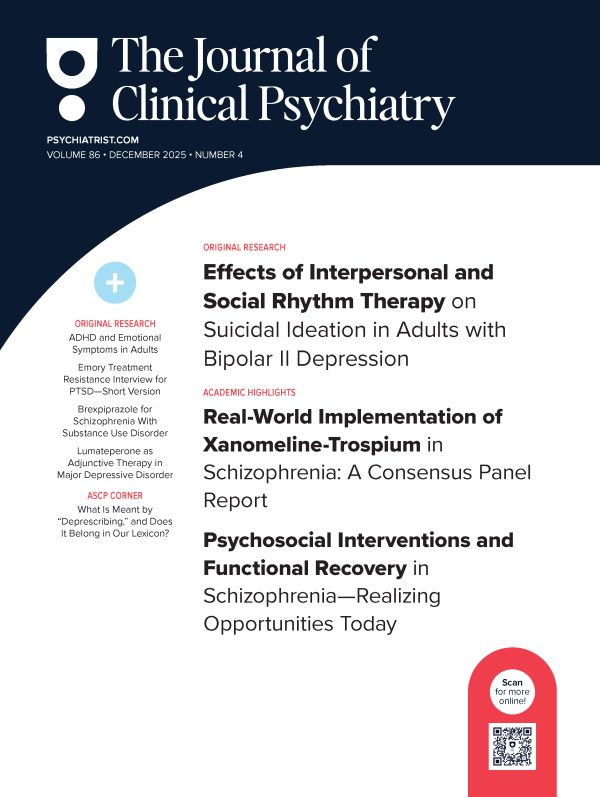Objective: To compare 2 methods of switching selective serotonin reuptake inhibitor (SSRI) nonresponders or partial responders to duloxetine.
Method: Adult outpatients with DSM-IV major depressive disorder, a Hamilton Rating Scale for Depression (HAM-D17) total score of >= 15, and a Clinical Global Impressions-Severity of Illness score of >= 3 despite at least 6 weeks of SSRI treatment were randomly assigned to either abrupt discontinuation of SSRI immediately followed by initiation of duloxetine (direct switch [DS]; N = 183) or tapered discontinuation of SSRI over 2 weeks and simultaneous administration of duloxetine (start-taper switch [STS]; N = 185). Efficacy, safety, and tolerability outcomes associated with these 2 switch methods were compared following switch and after 10 weeks of duloxetine treatment. The study was conducted from August 2004 to March 2006.
Results: There was a significant improvement in depressive symptom severity in both switch groups as measured by mean change in HAM-D17 total score (p <= .001), but no difference between the switch groups (-10.23 DS vs. -10.49 STS). Criteria for noninferiority of the DS group to the STS group, which was the primary objective of the study, were met. Response rates (54.4% DS vs. 59.6% STS), remission rates (35.7% DS vs. 37.2% STS), and other secondary outcome measures were similar for both switch groups. Few patients discontinued the study due to adverse events (6.6% DS vs. 3.8% STS). Headache, dry mouth, and nausea were the most frequently reported adverse events in both switch groups.
Conclusions: Switch to duloxetine was associated with significant improvements in both emotional and painful physical symptoms of depression and was well tolerated and safe, regardless of which of the switch methods was used.
Please sign in or purchase this PDF for $40.00.





